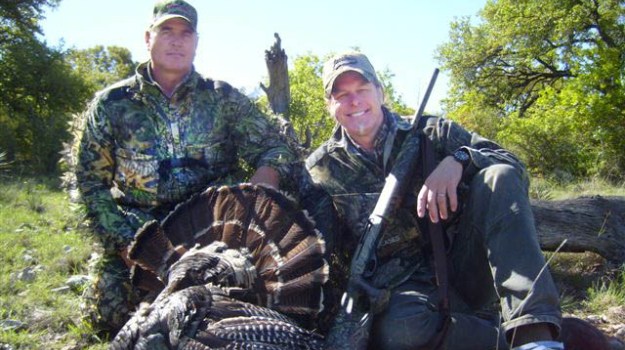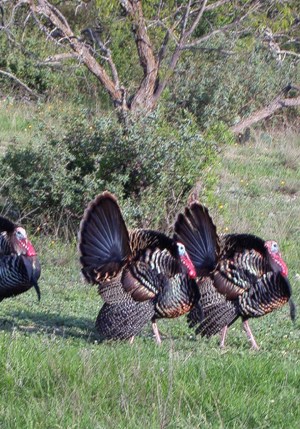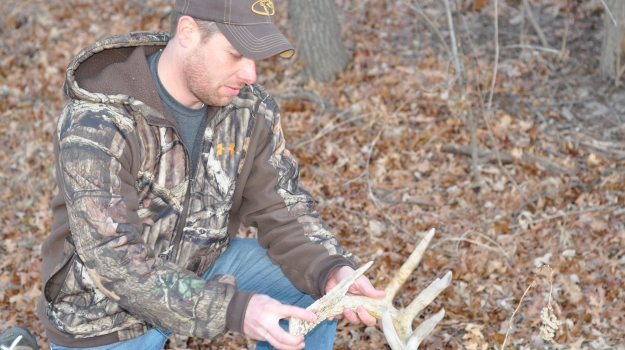
with Kevin Burleson
Editor’s Note: Kevin Burleson, near Brody, Texas, who operates the Heart of Texas Bowhunting ranch, offers Rio Grande turkey hunting in the spring for both bowhunters and shotgun hunters. Mossy Oak wanted to know what makes Rio Grande turkeys different from Eastern gobblers, and what hunting these birds is like. Burleson, a Mossy Oak and PSE Pro Staffer, appears on the “Mossy Oak Deer Thugs” TV show on the Pursuit Channel.
 Many turkey hunters like to come to Texas and hunt Rio Grande gobblers, since these turkeys are much-more vocal than Eastern or Osceola turkeys. Most turkey hunters like calling to turkeys, and out here you can call a lot to a gobbler without spooking him. Usually a hunter easily can get a Rio Grande gobbler excited, especially during the late season when most of the hens are on the nest, and a gobbler is looking for a sweetheart. This is when the Rio Grande gobblers become really vocal. They are easier to find and much-more receptive to calls. Another aspect of hunting Rio Grande gobblers that our clients really enjoy is you can call these turkeys from a much-greater distance out here than you can in the East. We can call a gobbler from 500 or 600 yards in to our hunter. Most turkey hunters enjoy watching the bird come in, strut, drum and get intense on finding a hen. He never considers that there may be a hunter in the area. We always tell our hunters, “If you can hear a turkey gobble, he can hear you call.”
Many turkey hunters like to come to Texas and hunt Rio Grande gobblers, since these turkeys are much-more vocal than Eastern or Osceola turkeys. Most turkey hunters like calling to turkeys, and out here you can call a lot to a gobbler without spooking him. Usually a hunter easily can get a Rio Grande gobbler excited, especially during the late season when most of the hens are on the nest, and a gobbler is looking for a sweetheart. This is when the Rio Grande gobblers become really vocal. They are easier to find and much-more receptive to calls. Another aspect of hunting Rio Grande gobblers that our clients really enjoy is you can call these turkeys from a much-greater distance out here than you can in the East. We can call a gobbler from 500 or 600 yards in to our hunter. Most turkey hunters enjoy watching the bird come in, strut, drum and get intense on finding a hen. He never considers that there may be a hunter in the area. We always tell our hunters, “If you can hear a turkey gobble, he can hear you call.”
I called one turkey in from 600- to 700-yards away. Our area had one of those crisp clear mornings where your call seems to travel forever. We actually had three people calling, and we filmed this hunt. We were up on a ridge, and we could see birds strutting a long way off from us. With our binoculars, we could see one turkey stick his neck out and gobble. Finally, this one gobbler broke away from the hens and a few other strutting gobblers and decided to come to us. This bird didn’t just mosey up to our stand. He came running straight to us as fast as he could. He would stop to gobble and then start running again. We finally took that gobbler when he was 20-yards away. Another thing that’s different about Rio Grande gobblers is that calling in more than one gobbler at a time isn’t unusual. I’ve had as many as seven gobblers come in to my hunter at one time, while I’ve been calling. We consistently will call in four or five gobblers at one time. Rio Grande gobblers don’t tend to split up like Eastern gobblers do.



























